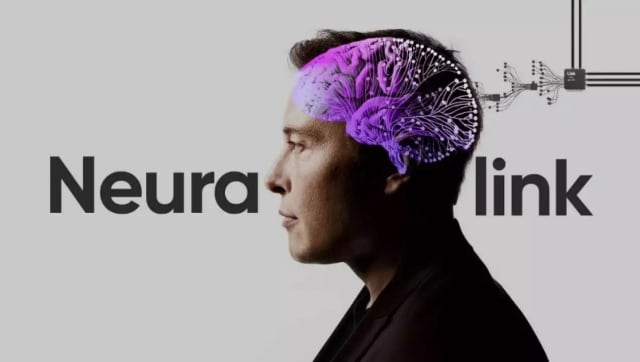Mehul Reuben DasDec 01, 2022 16:45:34 IST
Depending on what your perspective is about Elon Musk, it seems that we have taken the most giant leap forwards to either a utopian or a dystopian future. Elon Musk, who has been in the headlines for the mess that Twitter is, demoed what one of his other companies, Neuralink has been up to, and boy, was it something to behold.

If everything goes according to Musk’s plan, we have something special here. Neuralink will either emerge as the single most revolutionary invention in the field of modern medicine and biotechnology for decades to come, or, Elon Musk just pulled off another Theranos-like scam.
Here’s everything that you need to know about Neuralink, what it promises to do, and will it have any impact on the future.
What is Neuralink?
Simply put, Neuralink is one of Elon Musk’s oldest projects. His vision was to create a new interface for humans to interact with computers that would deem all existing interface technologies – using a mouse a keyboard, or touch screens – redundant. His idea was to let humans control a computer just by thought.
However, in the pursuit of a simple user interface, the engineers at Neuralink went on and achieved something even better. But more on this later.
What is Neurotechnology?
Neurotechnology or Neuron-technology, is the next level of biomechanics and bioelectronics if Musk is to be believed. Simply put, Neurotechnology is a method or electronic device which interfaces with the nervous system to monitor or modulate neural activity. We already have some form of Neurotechnology in our day-to-day lives – cochlear implants and retinal implants that enable deaf patients to hear a little, and blind patients to have some level of sight. However, Musk claims that with the latest developments that Neuralink has made, Neurotechnology will make massive leaps.
My dad has been paralyzed for over 30 years. Would love to see Neuralink allow him to walk again!
— Matt Wallace (@MattWallace888) November 30, 2022
What are brain-computer interfaces?
Brain–computer interface or Brain-machine interface, in its most rudimentary form, allows humans to interact with computers just by thought. Although this might seem too farfetched, there have been technologies that has allowed users to interact with computers without any physical I/O device. BCIs have also been used to augment, or repair human cognitive or sensory-motor functions but in a very limited manner.
What Neuralink and Musk hope to do, is to not just bring this technology to the masses, and improve the quality of life for disabled and impaied individuals, but to enable the step of evolution in humans – with all our implants and medical devices, we already are becoming a hybrid between human and robotics. Neuralink hopes to speed that process up.
What does Musk want Neuralink to achieve with the implementation of Neurotechnology?
Neurotechnology and Brain-computer interface are prohibitively expensive. That is why, we only see their application in a limited use. The most common use of this tech involves cochlear implants and retinal implants, but then, they are very limiting and do not really function as a patient would hope them to. With such implants, patients only get a vague sense of what they are trying to perceive. For example, with retinal implants, patients are only able to see a rough shadow of things, with most of the details lost in artefacts. Moreover, they are not able to see colour. Cochlear implants, again, has the same limitations.
Elon Musk neuralink brain chip! 😬 #elon pic.twitter.com/6RUMYpMNHV
— Jorge Heathen (@HeathenFam) November 22, 2022
With Neuralink, Musk hopes that these implants will get much better over time as more and more startups start working along with Neuralink.
A Neuralink-trained monkey doing Telepathic Typing, using just his mind 🤯 @elonmusk pic.twitter.com/PUkFA9qpUi
— DogeDesigner (@cb_doge) December 1, 2022
Apart from augmenting damaged portions of the nervous system, not just the brain, Neuralink hopes to deal with memory loss, hearing loss, blindness, paralysis, insomnia, extreme pain, seizures, addiction, strokes and brain tissue damage. More importantly, though, Musk hopes that Neuralink opens up the world to a whole new way of computing, and interacting with machines.
Imagine this – you simply sit inside a car that Elon Musk makes, lets say a Tesla Model S, and just think of where you want to go. The car will drive you to the place, while you’re busy thinking about other things, and, are getting it done as you think – this, is Musk’s bigger picture, put succinctly.
Will Neuralink revolutionise modern medicine?
As stated, the technology that Neuralink uses has been there for ages. What is new with Elon Musk’s company is that it has condensed the tech into a small implantable package and is aiming to distribute it to the masses in an affordable, and upgradeable manner.
AMAZING 💥
Neuralink Show and Tell, Fall 2022Elon explains how Neuralink will make the blind see and the handicapped walk. pic.twitter.com/Th0KqkdwyH
— Vth Column (@mit61678746) December 1, 2022
Depending on how the FDA trials and clinical trials go, Elon Musk’s Neuralink actually has the potential to truly revolutionise modern medicine. The tech will need a lot of support from third-party developers.
Or, it can turn out to be one of the biggest fugazi that the world has fallen for.
What all these Neuralink posts make clear is:
1) the general public has no clue what the fuck it does or is supposed to do,
2) its marketing seems intended to create such confusion
2) people thus have decided that it can perform medical miracles and Elon Musk is a genius. pic.twitter.com/lWSe80oGli— The Doubtful Guest (@InsideATureen) December 1, 2022
Remember how Theranos and Elizabeth Holmes promised they had revolutionised medical tests and blood tests forever? We just hope that Musk isn’t digging a similar pit for himself.
Post a Comment